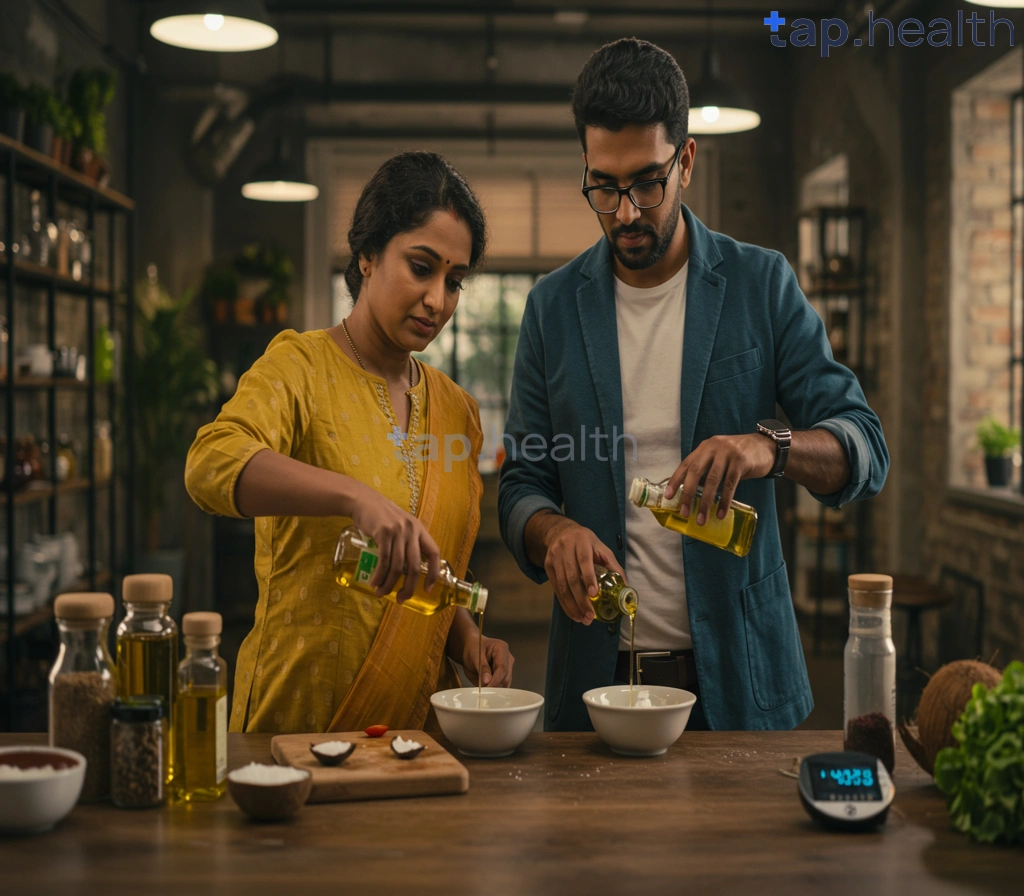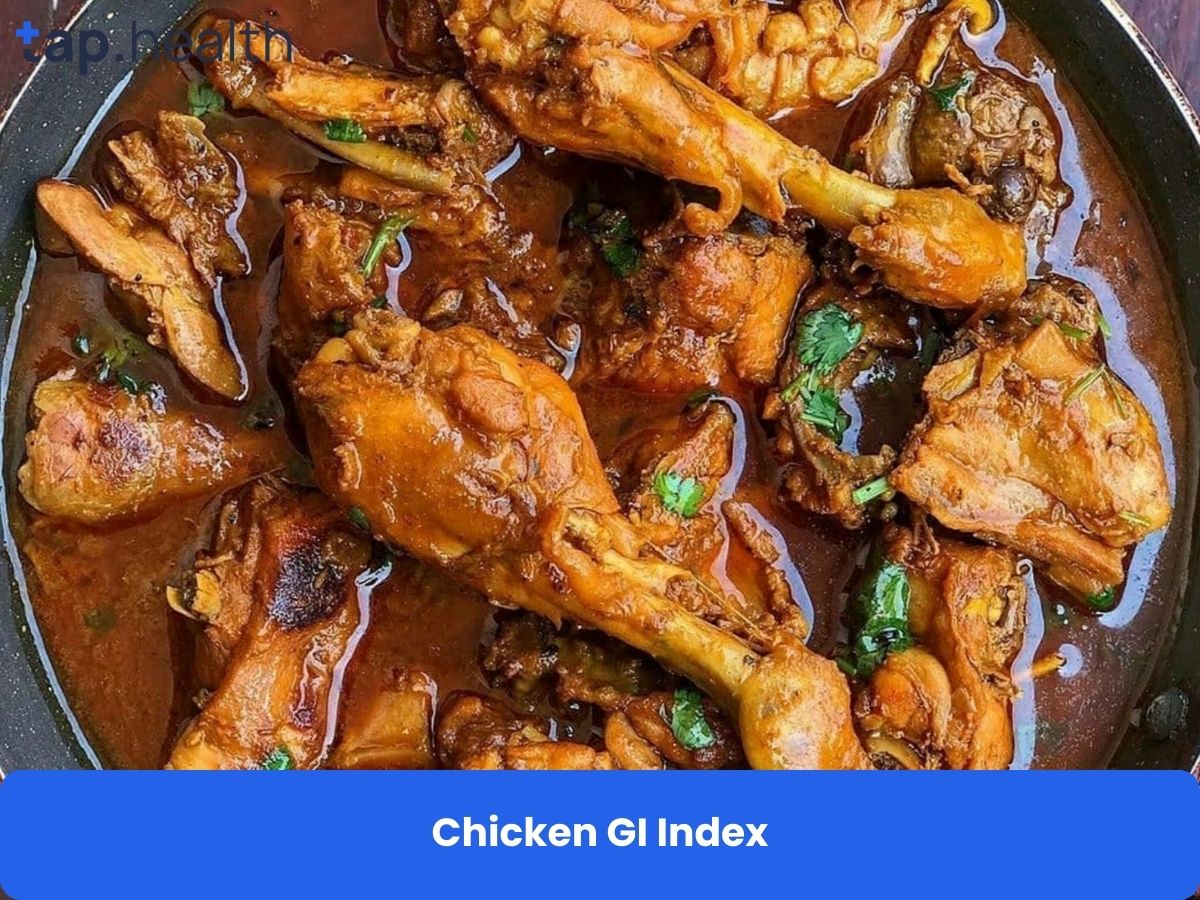Table of Contents
- Diabetes-Friendly Cooking: Best Oils for Blood Sugar Control
- Healthy Cooking Oils: A Minute-by-Minute Guide for Diabetics
- What are the Healthiest Cooking Oils for Diabetes? A Quick Guide
- Minute-by-Minute Guide to Diabetes-Friendly Cooking with Healthy Oils
- Top 5 Healthy Oils for Diabetic-Friendly Recipes: A Comparison
- Frequently Asked Questions
- References
Managing diabetes can feel like navigating a minefield, especially when it comes to cooking. But what if I told you delicious, healthy meals are totally achievable? This blog post dives into the heart of Diabetes-Friendly Cooking: Minute-by-Minute Guide to Healthier Oils, showing you exactly how to choose and use the right oils to support your health goals. We’ll break down the complexities of healthy fats, offering simple, practical tips you can implement immediately. Get ready to discover how swapping out just one ingredient can make a world of difference in your blood sugar management and overall well-being!
Diabetes-Friendly Cooking: Best Oils for Blood Sugar Control
Managing blood sugar levels is crucial for individuals with diabetes, and choosing the right cooking oil plays a significant role. The impact of dietary fat on blood glucose is undeniable, making informed choices essential, especially considering that 61% of people with diabetes are aged between 20-64 years, a demographic often active in the kitchen. In Indian and tropical countries, where diverse culinary traditions thrive, understanding the best oils for diabetes management becomes particularly important.
Oils to Embrace for Healthy Cooking
Opt for oils rich in monounsaturated and polyunsaturated fats, which are known to support heart health and blood sugar control. Olive oil, a staple in Mediterranean cuisine and increasingly popular in India, is an excellent choice. For more information on its benefits, check out this article: Is Olive Oil Good for Diabetes Type 2? Benefits and Tips. Avocado oil, with its high smoke point, is perfect for stir-frying popular in many tropical countries. Coconut oil, a traditional ingredient in South Asian and Southeast Asian cooking, should be used sparingly due to its higher saturated fat content, though it does offer some benefits.
Oils to Limit or Avoid
Conversely, limit your use of oils high in saturated and trans fats. These fats can negatively impact blood sugar control and overall health. This includes many commercially produced vegetable oils and partially hydrogenated oils often found in processed foods. For the over 39% of individuals with diabetes aged 65 and over, minimizing these less healthy oils is particularly important for overall well-being. Remember that making healthy food choices extends beyond just oils. To learn more about other foods that can support blood sugar management, see this article on 20 Best Foods for People with Diabetes – Tap Health.
Making Informed Choices
Remember that mindful cooking extends beyond just oil selection. Combining healthy oils with balanced meals, regular exercise, and consistent blood sugar monitoring helps manage diabetes effectively. By making conscious choices, you can enjoy delicious and diabetes-friendly meals while prioritizing your health. Consider consulting a doctor or registered dietitian for personalized guidance tailored to your specific needs and cultural dietary practices. This will allow you to confidently navigate the diverse culinary landscape of Indian and tropical countries while maintaining optimal blood sugar levels.
Healthy Cooking Oils: A Minute-by-Minute Guide for Diabetics
Managing diabetes in Indian and tropical countries often involves navigating a diverse culinary landscape rich in flavorful oils. Understanding which oils to choose and how to use them is crucial for maintaining healthy blood sugar levels. Remember, a balanced approach, including portion control aligned with your individual dietary needs (generally 45–60 grams of carbs per meal, but consult your doctor for personalized advice), is key.
Choosing the Right Oils
The minute you start cooking, the type of oil you select matters. Avoid heavily processed oils high in saturated and trans fats, often found in many commercially prepared Indian snacks and fried foods. Instead, opt for oils rich in monounsaturated and polyunsaturated fats. Coconut oil, a staple in many tropical cuisines, should be used sparingly due to its saturated fat content. Olive oil, known for its health benefits, is an excellent choice for dressings and low-heat cooking. Mustard oil, popular in India, can be a healthy option when used in moderation. Groundnut oil is another good choice for its high smoke point, suitable for stir-frying and other higher-heat cooking methods. For more information on selecting the perfect oil for your needs, check out our article on best cooking oil.
Minute-by-Minute Oil Usage
Think about your cooking time. For quick stir-fries (under 5 minutes), high-smoke-point oils like groundnut or mustard oil are ideal. For longer cooking times (10-15 minutes), olive oil or a blend of oils can be used. Remember to use oils in moderation. A small amount goes a long way in adding flavor and preventing sticking. Always measure your oil to control portion sizes.
Regional Considerations
In India and tropical countries, many traditional cooking methods involve deep frying or using oil liberally. Adjusting these methods is vital for diabetes management. Consider baking, steaming, or grilling as alternatives to deep frying. Explore lighter cooking methods and healthier oil alternatives to create delicious and diabetes-friendly meals. Remember to consult with a nutritionist or healthcare professional to create a personalized plan that suits your individual needs and cultural preferences. It’s also important to consider other dietary fats. For example, you might wonder, Is butter bad for diabetics? This is a common concern, and understanding the impact of different fats is key to managing your blood sugar levels effectively.
What are the Healthiest Cooking Oils for Diabetes? A Quick Guide
Managing diabetes effectively often means making smart food choices, and choosing the right cooking oil is crucial. For individuals in India and tropical countries, where heart health is a significant concern, this decision is even more critical. Consider this: smokers with diabetes face double the mortality risk from cardiovascular issues. Therefore, selecting healthy oils is paramount in mitigating this risk.
Understanding Oil Types and Their Impact
Not all cooking oils are created equal. Many popular oils in India and tropical regions, such as coconut oil and palm oil, are high in saturated fats, which can negatively impact blood sugar control and increase cardiovascular risk. Opting for healthier alternatives is essential for better diabetes management.
Best Choices for Diabetic-Friendly Cooking
For those with diabetes in India and other tropical climates, prioritizing monounsaturated and polyunsaturated fats is key. Olive oil, widely available and a staple in many Mediterranean diets, is an excellent choice. Mustard oil, a popular choice in India, also offers a healthy option when consumed in moderation. Other good alternatives include sunflower oil, peanut oil, and avocado oil. Remember to check the labels for purity and avoid heavily processed oils.
Practical Tips for Healthy Cooking
Use oils sparingly; even healthy oils contribute to calorie intake. Experiment with air frying or baking to reduce the need for excessive oil. Consider incorporating spices like turmeric and ginger, known for their anti-inflammatory properties, to further enhance your heart health. For more information on managing your carbohydrate intake, you might find our article on Low-Carb vs. Moderate-Carb Diets for Diabetes: What Works Best? helpful.
Regional Considerations
In India and tropical countries, the availability and affordability of various oils differ significantly. Choose the healthiest option that fits your budget and lifestyle. Remember that consistent healthy eating habits, including smart oil choices, are crucial for managing diabetes effectively and reducing the risk of cardiovascular complications. Consult a healthcare professional or registered dietitian for personalized advice on oil selection and dietary management. Remember to speak to your doctor before making significant dietary changes or incorporating Safe and Effective Dietary Supplements for Diabetes Care.
Minute-by-Minute Guide to Diabetes-Friendly Cooking with Healthy Oils
Managing diabetes, especially in India and tropical regions, requires careful attention to diet. Over 75% of people with diabetes live in low- and middle-income countries, making accessible, culturally relevant cooking advice essential. Choosing the right oils is a cornerstone of diabetes-friendly cooking.
Choosing the Right Oils
The first step is selecting the right oil.
-
Best options: Refined oils like sunflower, safflower, and rice bran oil are widely available in Indian and tropical markets. These oils have a good balance of monounsaturated and polyunsaturated fats, which can help manage blood sugar.
-
Avoid: Heavily saturated and trans fats, often found in fried foods and packaged snacks.
-
Coconut oil: Popular in tropical regions, but use sparingly due to high saturated fat content.
Choosing the right oil sets the foundation for healthy meals that support stable blood sugar levels.
Cooking Techniques
Next, focus on healthy cooking methods.
-
Use: Stir-frying, steaming, baking, or grilling instead of deep frying.
-
Moderation matters: Even healthy oils add calories, so use small amounts and distribute evenly while cooking.
-
Tip: Sauté spices in a little oil before adding vegetables to maximize flavor without excess fat.
Smart cooking techniques help retain nutrients while keeping meals diabetes-friendly. For more tips, check out our article on 10 Proven Tips for Effective Diabetes Management.
Regional Considerations
Making use of locally available ingredients is important:
-
Indian and tropical cuisines often include spices, herbs, and vegetables that naturally support healthy cooking.
-
Focus on flavorful alternatives to heavy oil use, such as steaming vegetables or using spices for taste.
-
Planning festive meals? Learn how to create diabetes-friendly dishes for holidays without compromising taste.
Top 5 Healthy Oils for Diabetic-Friendly Recipes: A Comparison
Choosing the right cooking oil is crucial for managing diabetes, especially in regions like India and other tropical countries where certain oils are staples. The impact on blood sugar levels is significant, and considerations extend beyond just managing blood sugar; nearly 15% of diabetics experience foot ulcers, highlighting the importance of overall health. Maintaining healthy blood sugar levels can contribute to reducing the risk of such complications. This is why incorporating Which Dalia Is Best for Diabetics? Benefits & Recipes into your diet, alongside the right oils, can be beneficial.
Coconut Oil: A Tropical Staple
Coconut oil, widely used in Indian and tropical cuisines, offers medium-chain triglycerides (MCTs) which metabolize differently than long-chain triglycerides found in other oils. While its saturated fat content requires moderation, its unique properties warrant consideration in a balanced diabetic diet. Remember portion control is key.
Olive Oil: The Mediterranean Marvel
Extra virgin olive oil, rich in monounsaturated fats, is a heart-healthy choice beneficial for managing diabetes. Its antioxidant properties also contribute to overall well-being. It’s versatile and easily incorporated into many Indian and tropical dishes.
Avocado Oil: Nutrient-Rich Choice
Avocado oil boasts a high smoke point, making it suitable for various cooking methods. Its monounsaturated fats and rich nutrient profile make it a healthy addition to diabetic-friendly cooking.
Mustard Oil: An Indian Favorite
Mustard oil, a common cooking oil in India, contains omega-3 fatty acids and antioxidants. However, it’s important to choose cold-pressed, refined varieties to minimize potential negative effects on blood sugar levels. Always opt for refined varieties for diabetic-friendly cooking.
Groundnut Oil: A Versatile Option
Groundnut oil offers a good balance of monounsaturated and polyunsaturated fats, making it a suitable choice for diabetic-friendly recipes. It also has a relatively high smoke point, making it versatile in the kitchen.
Choosing the right oil is only one piece of the puzzle in managing diabetes. Consult your doctor or a registered dietitian to create a personalized meal plan that works for your specific needs and preferences. Prioritize a balanced diet and regular exercise for optimal health management, especially considering the heightened risk of complications like those detailed in Top 5 Foot Care Tips for Diabetics | Easy Steps to Healthy Feet.
Frequently Asked Questions
Q1. What types of cooking oils are best for managing diabetes?
For managing diabetes, prioritize oils rich in monounsaturated and polyunsaturated fats, such as olive, avocado, and mustard oil. These are healthier options compared to oils high in saturated and trans fats.
Q2. Should I avoid coconut oil completely if I have diabetes?
While coconut oil contains saturated fat, which should be limited in a diabetic diet, you don’t need to avoid it entirely. Just use it sparingly as part of a balanced approach.
Q3. What other lifestyle changes besides oil choices help manage diabetes?
In addition to choosing healthy cooking oils, portion control, healthy cooking methods (like baking or steaming), and regular exercise are crucial for effective diabetes management.
Q4. How can I determine which cooking oils are best for my individual needs?
It’s essential to consult a doctor or registered dietitian for personalized guidance on the best cooking oils and dietary plan for your specific health needs and cultural preferences.
Q5. Are there any specific concerns about cooking oils for people in tropical regions like India?
Yes, the diverse culinary traditions in India and other tropical regions often involve specific oils. It’s important to choose healthy options like olive, avocado, and mustard oil while limiting those high in saturated and trans fats, and to consult a professional for personalized advice.
References
- A Practical Guide to Integrated Type 2 Diabetes Care: https://www.hse.ie/eng/services/list/2/primarycare/east-coast-diabetes-service/management-of-type-2-diabetes/diabetes-and-pregnancy/icgp-guide-to-integrated-type-2.pdf
- Your Guide to Diabetes: Type 1 and Type 2: https://www.niddk.nih.gov/-/media/Files/Diabetes/YourGuide2Diabetes_508.pdf



